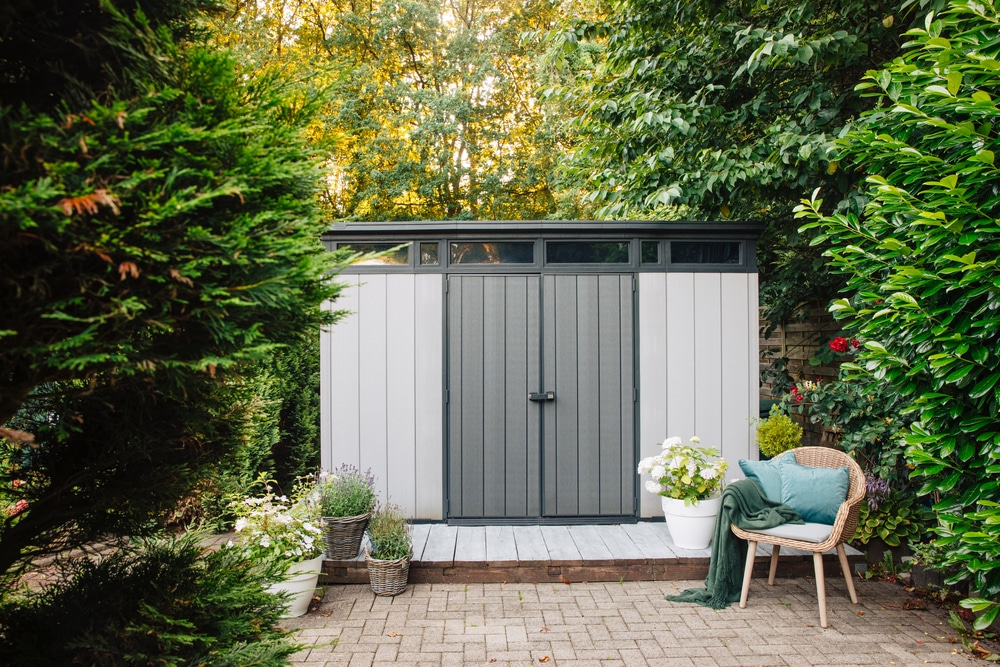A home renovation or home improvement loan is a personal loan that can be used to cover the cost of any sort of property renovation or improvement, whether on your personal home or an investment property. This can include:
- Kitchen and bathroom remodelling
- Plumbing and electrical work
- Home repairs
- Building additional living space
- Adding windows or skylights
- Garden landscaping
- Installing a swimming pool
- Energy efficiency improvements such as solar panels
It isn’t a product in itself, meaning you aren’t restricted to using the approved funds for renovations in the same way you’re required to dedicate 100% of the funds you receive from a car loan to the purchase of your car.
Personal loans are designed to be versatile. You can take out as little as $2,001 all the way up to $75,000 depending on your circumstances and needs, and can use the funds for any type of improvement you wish, from minor landscaping to expanding your home with an extension.
Why compare personal loans with Savvy?
There's no need to worry about forking out to compare offers. Our service is free, so you can come back whenever you like.
You don't need to worry about sifting through documents and visiting the post office, as they can all be submitted online.
We've partnered with personal loan companies you can trust to ensure your comparison is a high-quality one.
How do I compare home renovation loans?
Because they’re the same as any other personal loan, it’s important to compare home improvement loans just as thoroughly. Fortunately, you can do this right here with Savvy. With reputable lending partners from around Australia, you can quickly find and compare some of the best offers on the market right now so you can choose your ideal loan with more confidence. Some of the key ways to compare loans include:
- Loan amount: you’ll first need to make sure the lenders you’re looking at can approve you for the loan amount you need. Although you’ll have the potential to borrow as much as $75,000, some lenders will cap their loans at just $50,000 instead. It’s especially important if you find yourself looking at larger amounts above this mark or smaller loans of $5,000 or less, as these are the areas where lenders are most likely to differ.
- Interest rate: one of the most important areas to nail down on your loan is the best interest rate you can manage, as this is the most significant cost factor on this type of finance. Your rate will be set based on a variety of variables, such as the size of your loan, your credit rating and the stability of your income, among others, so it’s likely to differ substantially between borrowers. Even a small difference in rate can save you hundreds of dollars, so it’s crucial to compare and find the lowest available to you.
- Fees: many loans also come with a range of extra costs attached that eat into your money even further. The most important to look for are establishment (up to $595) and ongoing (up to $10 per month) fees, although both of these charges are commonly not imposed by lenders. Just like interest rates, seemingly small differences between costs can make a difference. For instance, you’ll save $300 on your five-year loan if you opt for a deal which comes with a $5 ongoing fee instead of $10.
- Loan term: you will typically be able to repay your loan over one to seven years. Although shorter loan terms are likely to cost less overall, it's important not to overburden yourself with loan payments and put yourself at risk of financial stress or default. Look for a term that suits your needs. If you want to pay off your loan in 12 months, for example, you can rule out any lenders that impose three-year term minimums.
- Early repayments: try to lock in a loan that allows you to pay more than the minimum required amount each month without penalty, as this can help you slash the total cost of the agreement in the long run. The shorter your loan term, the faster your outstanding loan debt decreases which, in turn, decreases the interest charged at a quicker rate. For instance, you could save $500 and trim five months off your agreement by paying an extra $100 each month on your $20,000, three-year loan at 10% p.a.
- Other features: there are other handy features you may gravitate towards as a borrower when comparing loan options. Redraw facilities are becoming more common on personal loans, enabling you to access the extra funds paid throughout your loan term and withdraw them for whatever purpose you need. These are useful if you decide to conduct more renovations before the end of your loan term. Also, you should look to ensure you can make your payments on your preferred schedule, either weekly, fortnightly or monthly, to suit your needs.
Can I use a green loan for my home renovations?
If you’re looking to make an environmentally friendly installation or purchase, you might be in the best position to take advantage of a green loan. These are personal loans offered by select lenders who reward borrowers for reducing their carbon footprint and opting for more energy-efficient systems by reducing their interest and fees. The potential uses for green loans are obviously more restrictive than the standard personal loan, but some of the ways you can make use of them include:
- The installation of solar panels
- The installation of more energy-efficient air conditioning
- The installation of a rainwater tank or other water harvesting systems
- Double-glazing your windows or further insulating your walls, floors and ceilings
- More eco-friendly appliances such as washing machines, refrigerators dishwashers
Can I use my mortgage to cover renovations instead?
Yes – many homeowners lean towards refinancing their existing home loan when covering the cost of renovations. However, it isn’t always the most cost-effective way to accomplish your goals, as finance costs build based on interest rate and term length. The easiest way to understand this is by looking at how interest adds up over different loan terms. Home improvement loans run for up to seven years, but the average home loan lasts for between 25 and 30. This results in a significant difference in how much interest you pay.
For example, if you borrowed $15,000 to redo your kitchen and added that to your 30-year, $600,000 home loan with an interest rate of 3.5% p.a., your repayments would only cost less than $70 extra per month. However, you’d pay an additional total of $9,248 in interest alone, meaning your $15,000 kitchen would end up costing you closer to $25,000.
Compare that with a three-year home improvement loan. To borrow $15,000 over three years at 10% p.a. would cost $2,424.28 in interest over the term, representing a saving of almost $7,000. However, it adds a new payment of $484 per month to your books for three years. This is why it’s always crucial to consider your options closely when determining the best solution for your home improvements.
Alternatively, you may wish to take out a construction loan. These are more suitable for significant renovations and are structured differently to other loan types. Payments are released in stages, enabling you to pay your builder in staggered instalments across the process. In some cases, you may only be required to pay interest on your loan during the period of construction, saving you on much-needed funds during a busy period. However, these aren’t as suited to smaller builds and may require significant deposits, which aren’t a mandatory aspect of home improvement loans.
Personal loan repayment calculator
It’s important to have an idea of what different loans might cost you overall before you apply. Fortunately, Savvy’s personal loan repayment calculator is simple to use and tells you everything you need to know about how much different offers might add up to overall based on a variety of different factors.
Your estimated repayments
$98.62
| Total interest paid: | Total amount to pay: |
| $1233.43 | $5,143.99 |
The types of Personal Loans
Apply for your personal loan online
First and foremost, you’ll need to fill out our quick and easy online form. Tell us about yourself, your finances, the loan you’re after and why you need it in just a few minutes.
Once you’ve done this, you’ll be able to assess the products on offer from our partnered lenders. A member of our team will reach out to help you choose the best available offer.
If you’re happy with one of the options available, you can go ahead and formally apply. We’ll handle this for you; simply send the required documents through our online portal and we’ll do the rest.
We’ll let you know when you’re formally approved, which can happen in a matter of hours, and all you’ll need to do is sign your loan contract electronically to receive your funds as soon as the same day.
Personal loan eligibility and documentation
You must be at least 18 years of age
You must be an Australian citizen or permanent resident (or, in some cases, an eligible visa holder)
You must be earning a stable income that meets your lender’s minimum threshold (this can start from as little as $20,000 per year)
You must be employed on a permanent, casual or self-employed basis
You must meet your lender’s minimum requirements related to your credit score and not be bankrupt or under a Part IX debt agreement
You must have an active phone number, email address and online bank account in your name
Your full name, date of birth, address and contact details
Such as a driver's licence or passport
Your last two consecutive payslips (or your last tax return if you're self-employed)
Information about any assets you own (such as a car or house) and liabilities in your name (such as other loans)
90 days of bank statements may be requested, but not always
Common questions about financing your home improvements
A comparison rate shows the true cost of a loan and is usually expressed as a percentage that tends to be slightly higher than the interest rate. This figure incorporates both the interest rate and main fees that apply to your loan, such as ongoing and establishment fees. Because each of these can cost a reasonable amount extra, you should always compare loans based on their interest rates also.
This will depend on how much you want to borrow and for how long. If you’re not sure, though, you can use our loan repayment calculator to find out how much different loans will cost you based on varying term lengths, interest rates and repayment schedules.
Your home improvement loan interest rate is calculated based on a couple of different factors, which are similar to the factors which shape your borrowing power. When you apply for a loan, the lender examines your work situation and how much you earn, as well as your recent history taking on and repaying debt. Your interest rate generally reflects the level of risk your lender perceives in your application.
This depends on the size of loan you’re looking to take out. If you only need a small amount of $2,000 or less, you might be able to benefit from your credit card’s interest-free period. However, if it’s not an amount you’re capable of paying off within the month, you’ll be better off taking out a renovation loan and avoiding the high interest rates which apply to credit cards.
If you apply for a secured personal loan, you will need to put up valuable items you own as collateral. While your property is used as security for large loans like home loans, personal loans will more often use smaller assets like cars to secure your loan. The types of collateral accepted vary by lenders, so it's important to check before you apply.
If you decide not to complete your renovation project, you'll still be responsible for repaying the loan in full. Lenders expect the loan to be repaid regardless of whether the project is finished. If you have funds left over, you may want to return the excess to reduce your loan balance, but the original repayment terms will still apply.




















































